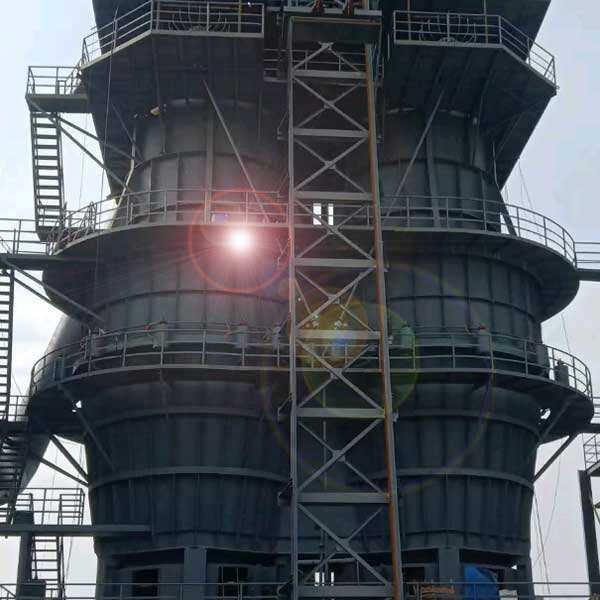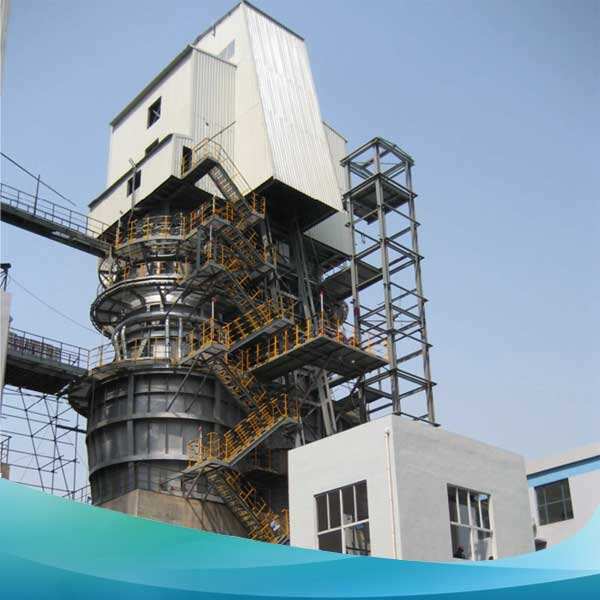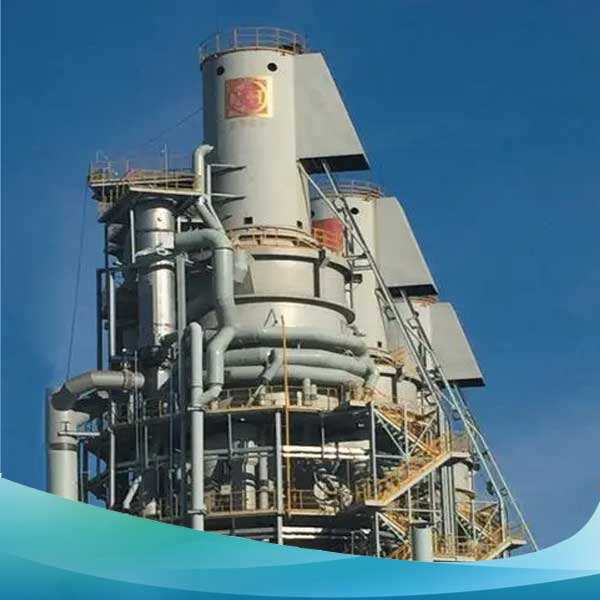Sebuah Rotary Kiln: Proses Pembuatan Semen Ini akan menjadi pandangan praktis tentang proses yang terlibat dalam pembuatan semen dan bagaimana rotary kilns digunakan untuk membuatnya. Rotary kiln adalah peralatan mekanik besar dari seluruh jalur produksi dan memengaruhi berbagai bidang industri. Bayangkan oven raksasa, super panas yang dapat melakukan berbagai hal yang sangat berguna. Sambil berputar di sekitar porosnya, mesin silinder ini memanfaatkan gerakan mereka untuk mengubah bahan dasar menjadi komponen kompleks. Rotary kiln industri dapat melakukan berbagai tugas, dari pengeringan mineral hingga pengolahan limbah besar-besaran, membuatnya sangat beragam dan berguna. Salah satu perbedaan paling penting antara rotary kiln modern dan model lama adalah bahwa mereka dapat membuat perubahan sangat kecil pada kecepatan putaran mereka. Ini berarti bahwa dengan menggunakan sistem penggerak kecepatan variabel, kiln Anda menggabungkan transfer panas dan membutuhkan jumlah waktu pengolahan yang tepat untuk bahan Anda menyelesaikan perlakuan termal mereka. Selain itu, sistem pendinginan shell dapat lebih meredakan stres termal, memungkinkan umur lebih panjang untuk peralatan Anda, dan sistem pembakaran ultra-efisien dengan dual-firing dapat mengurangi emisi. Ini memungkinkan optimasi efisiensi operasional lebih lanjut melalui penyesuaian dinamis yang jauh lebih akurat berdasarkan sistem kontrol canggih dengan pemantauan waktu nyata & analitik data.
Pada masa kini, kiln putar telah menjadi salah satu alat penting yang membantu praktik industri dan manufaktur yang berkelanjutan. Perangkat pengendalian polusi modern seperti scrubber dan filter digunakan dalam kiln ini untuk meminimalkan pelepasan bahan berbahaya. Selain itu, kiln putar dapat dioperasikan menggunakan bahan bakar alternatif seperti bahan bakar turunan limbah, mengurangi ketergantungan pada bahan bakar fosil dan memberikan metode ramah lingkungan untuk pengolahan limbah. The pembakaran kapur daur ulang dari apa yang bisa dikategorikan sebagai panas limbah, dicapai dengan mengurangi jejak karbon (mungkin total energi) menjadi lebih efisien secara proaktif sehingga beberapa sistem ini dapat memiliki fungsionalitas yang terestabilisasi setidaknya sebagian kembali
Kiln putar digunakan oleh puluhan industri karena fleksibilitasnya. Secara signifikan, mereka digunakan dalam peningkatan arteri dari yang rendah hingga 1.000 ton/jam ke atas dan juga menggunakan tempat tidur terfluidisasi untuk area pemulihan batu. Dalam manajemen limbah, insinerator digunakan untuk pengolahan dan pembuangan limbah berbahaya, medis, dan sampah padat perkotaan... Kiln putar digunakan untuk melaksanakan proses seperti pra-kondisi pakan ternak, pengeringan arang aktif, dan oksidasi lumpur limbah; mereka juga digunakan untuk melebur berbagai komponen kimia dalam pengolahan logam. Fleksibilitas kiln putar inilah yang mendasari penggunaannya dalam begitu banyak aplikasi untuk mencapai proses yang diinginkan.
Pengendalian suhu material bisa menjadi aspek kunci dalam operasi kiln putar, seperti yang mungkin Anda ketahui dari menjalankan kontrol pengeringan. Suhu mempengaruhi baik laju reaksi kimia (pemrosesan termal) maupun perubahan sifat fisik (pengeringan). Dalam proses semen/kalsinasi dan lainnya, sangat penting untuk menjaga suhu agar produk memiliki kualitas yang lebih baik. Pensalab memiliki teknologi baru dalam profil termal yang terkait dengan pemisahan zona cerdas dan penempatan pemanas yang menawarkan distribusi panas yang stabil sepanjang jangkauan kiln. Karena itu mengontrol pasokan bahan bakar, aliran udara, dan pemanasan secara optimal, maka metode ini tidak menyebabkan pemborosan energi seperti pada beberapa tender yang salah di mana suhu turun di bawah 0 hingga di atas maksimum, misalnya stainless steel, sehingga tidak akan ada degradasi akibat suhu tinggi.
Rotary kiln yang dirancang khusus memainkan peran penting dalam pemrosesan material yang tepat. Semua solusi ini dirancang dengan mempertimbangkan sifat material umpan dan kapasitas produksi yang sesuai. Salah satu keunggulan adalah konstruksi modular yang memudahkan pemasangan dan peningkatan, bersama dengan spesifikasi peralatan yang tepat untuk memastikan hasil yang tahan lama meskipun dalam kondisi proses yang paling keras. Fungsionalitas yang ditawarkan oleh jenis customisasi hampir pasti sepadan dengan biaya manajemen tambahan karena tidak hanya memungkinkan otomatisasi lebih lanjut, tetapi juga akan menghemat biaya pemeliharaan dengan biaya operasional yang begitu rendah - sebuah keuntungan tak terbantahkan untuk mencapai ROI yang menguntungkan.
Jadi, pada akhirnya, terbukti bahwa kiln putar adalah yang memenuhi serangkaian permintaan dari industri dan perlindungan lingkungan. Karena mereka dapat melayani aplikasi industri yang luas dan pelanggan yang membutuhkan kontrol suhu panas, bersama dengan fungsi pengolahan material yang memberikan tingkat kinerja yang tidak kompromi, nilai mereka akan bertahan lama di era teknologi canggih yang berkembang pesat dalam industri. Seiring industri semakin bergerak menuju keberlanjutan, ini akan menjaga kiln putar sebagai teknologi paling canggih untuk menyediakan masa depan yang lebih hijau.
Memberikan nilai kepada berbagai metode operasi dan desain, ini telah 'memodernisasi jantung dari rotary kiln lama' dalam hal fokus proses atau produk. Sistem penggerak kecepatan variabel - memberikan kendali yang lebih besar atas kecepatan rotasi drum dengan penyesuaian halus yang memaksimalkan waktu tinggal transfer panas. Sistem pendingin pada cangkang membantu mengurangi stres termal dan meningkatkan umur pakai peralatan. Rotary kiln terbaru juga memiliki sistem pembakaran terkini untuk pasokan energi optimal dan dapat, sekitar lima hingga delapan kali setahun, mengubah campuran bahan bakar utamanya sehingga emisi menurun drastis. Pemantauan langsung secara real-time dengan analitik data memastikan bahwa perhatian penuh diberikan pada setiap elemen dari setup, mengunci operasi untuk manajemen proses yang akurat dan membuat penyesuaian segera setelah variabel berubah, menjaga kondisi pada performa puncaknya.

Dalam perkembangan alam rotary kiln dalam kehidupan kontemporer, ini bukanlah soal kemungkinan tetapi lebih merupakan pergeseran tak terhindarkan setelah munculnya versi-versi berkelanjutan. Emisi partikel dan gas berbahaya dari teknologi ini secara signifikan dikurangi dengan melengkapi sistem dengan teknologi modern pembuatan kapur tindakan pengendalian polusi seperti scrubber dan filter. Selain itu, solusi berulang lain untuk mengurangi ketergantungan pada bahan bakar fosil adalah kemampuannya untuk beroperasi dengan bahan bakar alternatif - bahkan yang menggunakan limbah sebagai bahan baku - yang menjadikannya cara yang tepat untuk menangani sampah. Penggunaan energi lebih lanjut dapat dihemat melalui sistem pemulihan panas yang menangkap panas limbah dari sistem dan mengarahkannya kembali ke proses, sehingga mengurangi jejak karbon keseluruhan bersama dengan penghematan energi.

Seperti disebutkan sebelumnya, hal terbaik tentang tungku rotari adalah bahwa mereka dapat digunakan di berbagai industri dan aplikasi. Mereka menjadi bagian integral dari proses penambangan dalam skala kecil hingga besar di pasar pertambangan, langkah-langkah pemisahan di lokasi sangat penting untuk poros besi. Dalam konteks manajemen limbah, mereka diperlukan untuk mengolah limbah berbahaya (inkinerasi/kombusti), medis (autoclave atau microwave) dan limbah padat perkotaan secara aman. Dalam industri pangan dan pertanian, mereka kiln putar kapur dapat digunakan untuk memproses produk seperti pakan ternak atau pupuk; sementara sektor kimia menggunakan mereka untuk melakukan berbagai reaksi. Beragam fungsinya membuat tungku rotari menjadi komponen esensial dalam berbagai aplikasi pengolahan industri.

Pengendalian lapangan suhu pada kiln putar dapat dengan baik memenuhi kedua persyaratan ini, dan hal tersebut secara langsung terkait dengan perubahan kimia yang menghasilkan sifat-sifat fisik. Pengendalian variabel proses juga sangat krusial karena sifat-sifat berbasis suhu dicapai selama produksi sebagian besar barang seperti semen, clinker, dan bahan yang telah diperoleh melalui proses pembakaran. Aliran panas yang konsisten diperoleh dari satu ujung kiln ke ujung lainnya dengan zona-zona tertentu dan penempatan elemen pemanas menggunakan profil termal rinci dengan teknologi terkini. Pada belt, terdapat pengendalian suhu otomatis dengan konsumsi energi rendah karena overheating dapat terjadi selama pengolahan dan pasokan bahan bakar atau aliran udara yang disesuaikan secara real-time (oleh blower yang dikontrol umpan balik), serta pemanasan langsung atau opsional pemanasan tidak langsung untuk mencegah degradasi.
lebih dari 20 tahun, berkomitmen pada pengembangan, penelitian instalasi kiln putar tungku kapur. sepenuhnya otomatis dengan investasi biaya terendah. tungku kapur memiliki rentang hidup lebih lama, kami dapat diandalkan berkat layanan unggulan dan pabrik kapur berkualitas tinggi.
perusahaan telah terutama menjalankan proyek insinyur, desain, pemasangan peralatan komisi oven, tungku produksi yang mencapai kiln kapur ramah lingkungan dan hemat energi. perusahaan telah membangun kiln aktif dalam berbagai ukuran, termasuk 150m3, 170m3, 200m3, 250m3, 350m3, 500m3, dll. kiln berhasil dioperasikan dan menghasilkan efek yang menakjubkan! Dengan menggunakan teknologi terbaru dari coke lime shaft kiln, gas-burning lime shaft kiln telah menjadi rotary kiln, dan kontrak desain telah ditandatangani dengan banyak perusahaan.
Sejak lama, AGICO telah memiliki tim teknis profesional, teknologi produksi yang matang, pengalaman produksi yang kaya, membentuk sistem manajemen teknologi produksi tungku sumur yang lengkap, membuat teknologi tungku putar penghemat energi dan ramah lingkungan sempurna. Teknologi ini memiliki biaya investasi rendah, kualitas otomatisasi tinggi, kualitas produk unggul, juga penggunaan energi rendah serta umur tungku yang lebih panjang. Ini telah banyak digunakan dalam industri metalurgi, kimia non-ferrous, logam, bahan bangunan, serta sektor lainnya, seperti pengolahan mendalam, dll.
AGICO memiliki tim teknis tungku putar yang sangat kompeten, yang khusus menangani proyek-proyek EPC kunci, yang mencakup manufaktur, desain pemasangan, penyesuaian pemeliharaan, layanan lainnya. Menyediakan sistem layanan pra-penjualan, purna-jual, dan purna-jual secara menyeluruh, memberikan dukungan teknis yang diperlukan untuk memenuhi kebutuhan pelanggan.